They have had some impressive releases over the past few years, and their latest board – the Banana Pi M3 – is no exception. In this article, we will take a look at the features of the Banana Pi M3, as well as provide some tips on getting started with it.
What’s the Deal with Single-Board Computers
Single-board computers are a relatively new development in computing technology. In the simplest terms, they are entire computer systems squeezed into one small board, making them incredibly versatile and powerful tools for multiple types of applications.
There are a variety of reasons why single-board computers are gaining in popularity, starting with their size and portability. These tiny machines can fit almost anywhere, making them ideal for projects that need to be moved around or stored away quickly. They also offer powerful features in a much smaller form factor than traditional desktop PCs, which makes them perfect for applications that require maximum performance without taking up too much space. And since they don’t generate as much heat as larger systems, they’re also extremely energy-efficient.
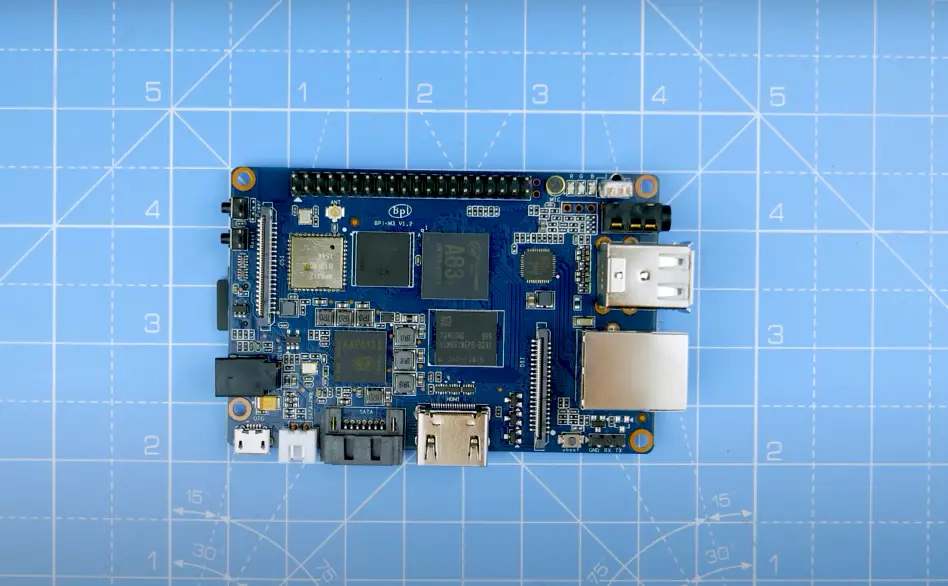
The Banana Pi M3 is an example of one of these single-board computers, designed to be extremely energy-efficient while still offering robust features that make it well-suited for tasks ranging from basic media streaming to complex programming projects.
Banana Pi M3 in General
It also has two USB ports, an HDMI port for video output, and an Ethernet port for wired networking. The board can be powered by a variety of power sources so you won’t be stuck with just a single option.
In terms of software support, the Banana Pi M3 comes with Android pre-installed as well as several variants of Linux such as Ubuntu and Debian. This makes it extremely versatile when it comes to different types of applications that can be run on the device.
The Banana Pi M3 is also extremely energy-efficient. This makes it perfect for applications where energy efficiency is paramount, such as robotics projects or embedded systems. [1], [2], [3]
Features of Banana Pi M3
Now that we’ve seen the basics of the Banana Pi M3, let’s discuss some of the features in more detail.
Presence of SATA port
The Banana Pi M3 features a SATA port that allows you to connect your laptop or desktop hard drive to the device. This should enable extra storage capabilities, as well as providing an additional source of power when needed. The SATA port is a great addition that allows users to easily upgrade their storage capacity and enhance their system performance.
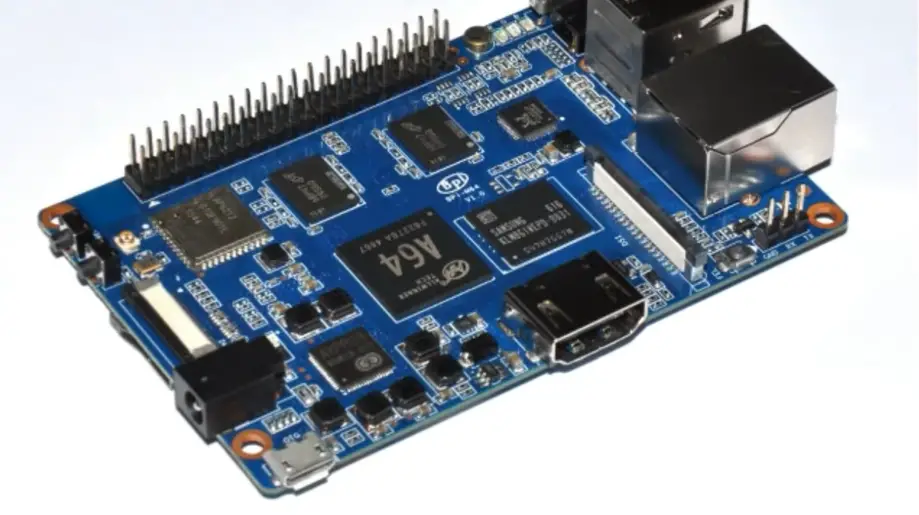
One main disappointment about the Banana Pi’s SATA port is that it doesn’t support the SATA interface. This means that you won’t be able to take full advantage of the faster speeds offered by SATA drives.
Compatibility with Raspberry Pi
The Banana Pi M3 is one of the main contenders in the Raspberry Pi clone market and is fully compatible with the Raspberry Pi. This means that any application or program designed for use on a Raspberry Pi can be used on the Banana Pi M3 without any issues. Additionally, many of the accessories intended for use with a Raspberry Pi are also compatible with the Banana Pi M3.
This makes it a great choice for users who are already familiar with the Raspberry Pi platform.
On-board storage
The Banana Pi M3 features on-board storage of 8GB eMMC flash memory. This is enough space to store your operating system and a few applications, and thanks to eMMC flash memory, the storage is much faster than traditional hard drives. This makes accessing your data a breeze and ensures that you are always up and running quickly.
It’s important to note that the on-board storage is limited and can fill up fast if you install several large applications. If you need more storage space, then you can either opt for an external USB drive or SD card, which allows users to increase their storage capabilities significantly.
Built-in Wifi and Bluetooth
The Banana Pi M3 also features built-in Wi-Fi and Bluetooth connectivity, making it a great choice for creating wireless networks or connecting to other devices. The built-in Wi-Fi is based on the 802.11b/g/n standard, which allows you to connect to a wide variety of devices and networks.
The inclusion of Bluetooth 4.0 makes it easy to transfer files wirelessly between compatible devices, as well as providing support for low energy peripheral applications such as mice and keyboards. This makes the Banana Pi an ideal platform for home automation projects or any other application that requires wireless communication between multiple devices.
Supports multiple Linux distros
The Banana Pi M3 is compatible with multiple Linux distros. You can choose from the likes of Ubuntu, Debian, ArchLinux and more. This allows for a diverse range of possibilities when it comes to customizing your setup and taking full advantage of the hardware capabilities that come with the board. This not only allows you to choose the best distro for your needs, but also helps ensure compatibility with various pieces of software.

And what’s more, these are supported officially by the Banana Pi team, so you can be sure that any software updates released for the board will be compatible with your chosen Linux distro. This makes it a great option for both experienced developers and those just getting started with building their own projects.
Besides Linux, the Banana Pi M3 also supports Android which can be used for various applications such as media centers or home automation systems.
Price
Let’s address another common question: the price tag. The Banana Pi M3 is probably one of the most pricey Raspberry Pi clones on the market, but for obvious reasons. The board packs a lot of features and capabilities, making it a great bang for your buck compared to other competitors.
This puts it above the price range of the Raspberry Pi 3, but still much less than larger boards such as the Beaglebone Black.
So if you have a limited budget you might want to consider options, but if you’re looking for a more powerful board with multiple features and capabilities then the Banana Pi M3 is definitely worth considering. It’s an excellent option that won’t break the bank. [1], [3], [4]
Banana Pi M3 Performance
It’s time to dive deeper into the performance of the Banana Pi M3.
Powerful processor
The Banana Pi M3 features an Octa-core processor that provides great performance and power efficiency. The processor has a maximum clock speed of 2GHz, which is one of the highest in its class. This makes it ideal for running multiple processes at once and for playing high-end games. Additionally, the processor also supports 4K video playback, allowing you to enjoy movies in high resolution.
The A83T processor offers great performance when running different types of applications, such as a web server or media center. Additionally, the presence of GPU acceleration also makes it well suited for running graphics intensive apps or games.
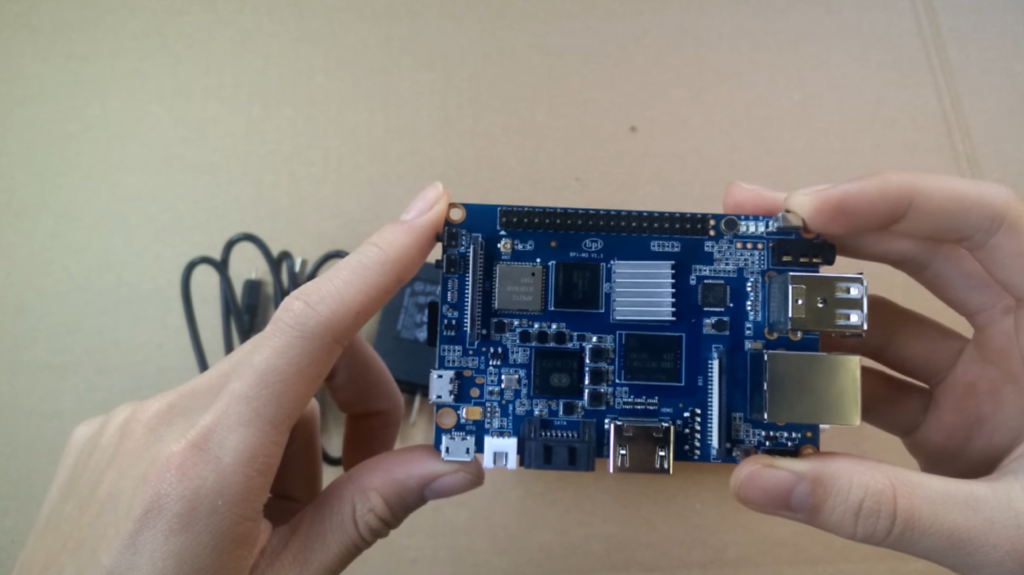
On a purely positive note, the Banana Pi M3 features 2GB DDR3 RAM which should provide plenty of multitasking capabilities. This is a great addition for anyone who wants to run multiple applications or programs at once.
Heat dissipation
However, a powerful processor does bring with it the risk of overheating and unfortunately that is a problem that can be experienced with the Banana Pi M3. To combat this, you will need to purchase a heat sink separately in order to ensure that your Pi does not get too hot and potentially damage itself.
Lack of off-the-shelf camera modules
One downside of the Banana Pi M3 is that it does not come with off-the-shelf camera modules. This means that if you want to use your Pi for any kind of photography or video recording, you will need to purchase a compatible camera module or USB webcam separately.
The good news is that there are a variety of camera modules available and they should be relatively easy to find online. Just make sure to check the compatibility before buying anything so as not to waste money on something that won’t work properly. [1], [3], [4], [5]
FAQ
Is Banana PI better than Raspberry Pi?
The Banana Pi M3 is a powerful single-board computer that has many features and capabilities. It is an updated version of the popular Raspberry Pi 3, but with improved performance and more features.
Overall, the Banana Pi M3 has more powerful hardware than Raspberry Pi 3. It comes with an octa-core ARM Cortex A7 processor, 2GB RAM and 8GB eMMC storage. The GPU is also much superior compared to the Raspberry Pi’s it features a Mali-450MP4 quad core GPU that supports OpenGL ES 2.0, OpenCL 1.1 and DirectX 9.3 graphics processing capabilities.
However, that doesn’t mean you should always go for the Banana Pi M3. The Raspberry Pi 3 is still a great device and has its own advantages, such as its cheaper price and smaller form factor. It also boasts a huge community of users and developers, so you should think about what your needs are before deciding between the two.
What is Banana Pi M3?
Banana Pi M3 is an open-source single board computer designed and developed by the Chinese company Sinovoip. It was introduced in 2015 as part of a range of Banana Pi single-board computers (SBCs). The M3 model has an octa-core Allwinner A83T processor and 2GB of RAM, making it a powerful SBC with high multimedia capabilities.
The board also features onboard Wi-Fi and Bluetooth capabilities, allowing for wireless connection to other devices. Other connectivity options include Ethernet, USB ports, HDMI output, multiple GPIO pins for project expansion, and a microSD card slot for storage.
While not as popular as the Raspberry Pi 3, Banana Pi M3 is an excellent alternative for those looking for a cheap and capable SBC.
What is Banana Pi used for?
The Banana Pi M3 is a single-board computer that can be used for many purposes. It is suitable for many applications including home entertainment, home automation and robotics projects due to its low price and high performance combination compared to other single board computers available today. Furthermore the Banana Pi M3 also comes with a rich array of ports including HDMI, USB and SATA which can be used for many different types of projects.
How much does a Banana Pi M3 cost?
The Banana Pi M3 is a powerful single-board computer with a range of features and capabilities. It typically retails for around $78 which is pretty expensive for a single-board computer, however, it packs in features that are usually found on more expensive machines. It comes with 8GB of internal storage and 2GB of RAM, as well as an Allwinner A83T octa-core processor which is capable of running Android along with other Linux distributions such as Ubuntu and Debian. Additionally, it has a built-in Ethernet port, WiFi support, Bluetooth 4.0 and USB ports for additional peripherals.
Useful Video: Banana Pi M3: A quick look
Conclusion
To sum it up, the Banana Pi M3 is an impressive device that packs plenty of features into its small form factor. Its powerful processor and 2GB of RAM make it a great choice for users who want to use their device as a desktop computer substitute. Additionally, its SATA port and compatibility with Raspberry Pi accessories help set it apart from other devices in the same price range.
However, it does have some drawbacks such as limited onboard storage and lack of support for SATA drives. Additionally, you will need to take extra measures to manage the heat dissipation of the device to ensure it operates at its peak performance. And lastly, because the board comes at a high price point, it may be out of the reach for many users.
In conclusion, the Banana Pi M3 is a great choice for power users who need a small form factor computer and don’t mind spending a bit more to get the most powerful device in its class. With the right peripherals, you can turn your Banana Pi M3 into an extremely capable PC that fits neatly inside your pocket. Though it may not be suitable for everyone’s needs, if you have the budget and know-how to make use of its features then this board could offer plenty of possibilities. So if you’re looking for something a bit different than other Raspberry Pis on the market, give the Banana Pi M3 a try!
References
- https://www.androidpimp.com/embedded/single-board-computer-banana-pi-m3-review/
- https://wiki.banana-pi.org/Banana_Pi_BPI-M3
- https://all3dp.com/2/banana-pi-m3-review-the-specs/
- https://www.slant.co/versus/13377/15521/~banana-pi-m3_vs_raspberry-pi-3-model-b
- https://forum.armbian.com/topic/474-banana-pi-m3/





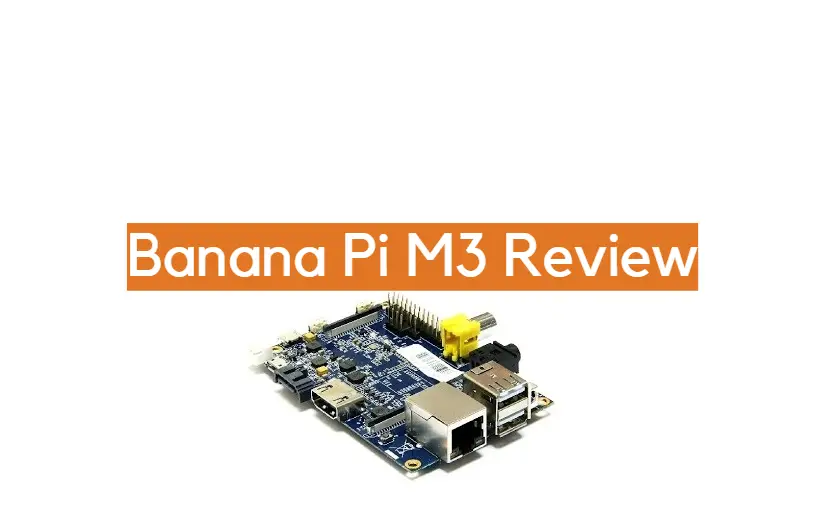






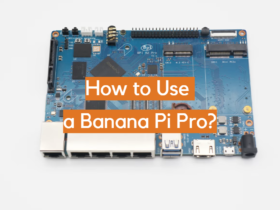
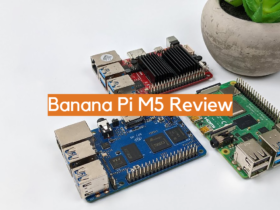
Leave a Reply